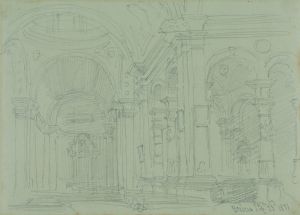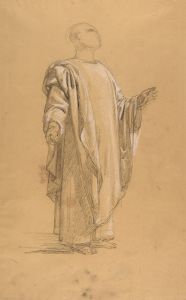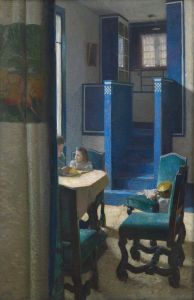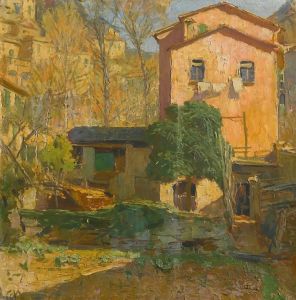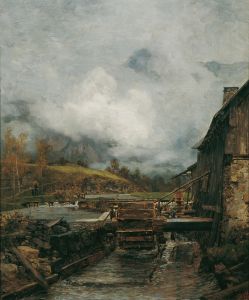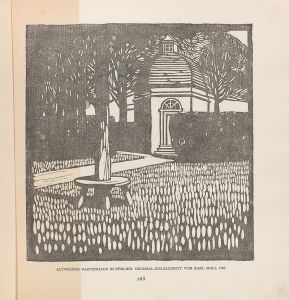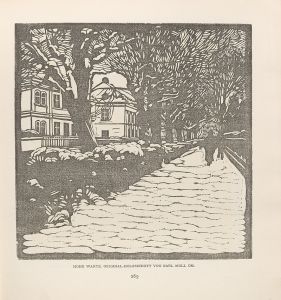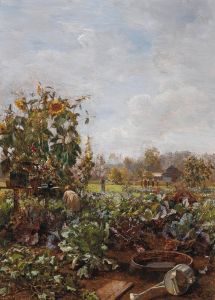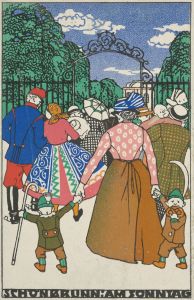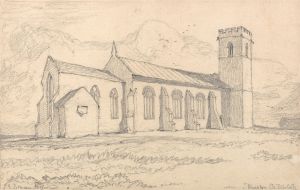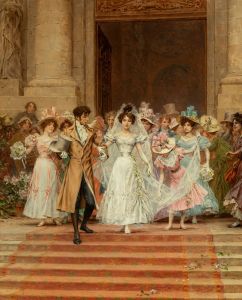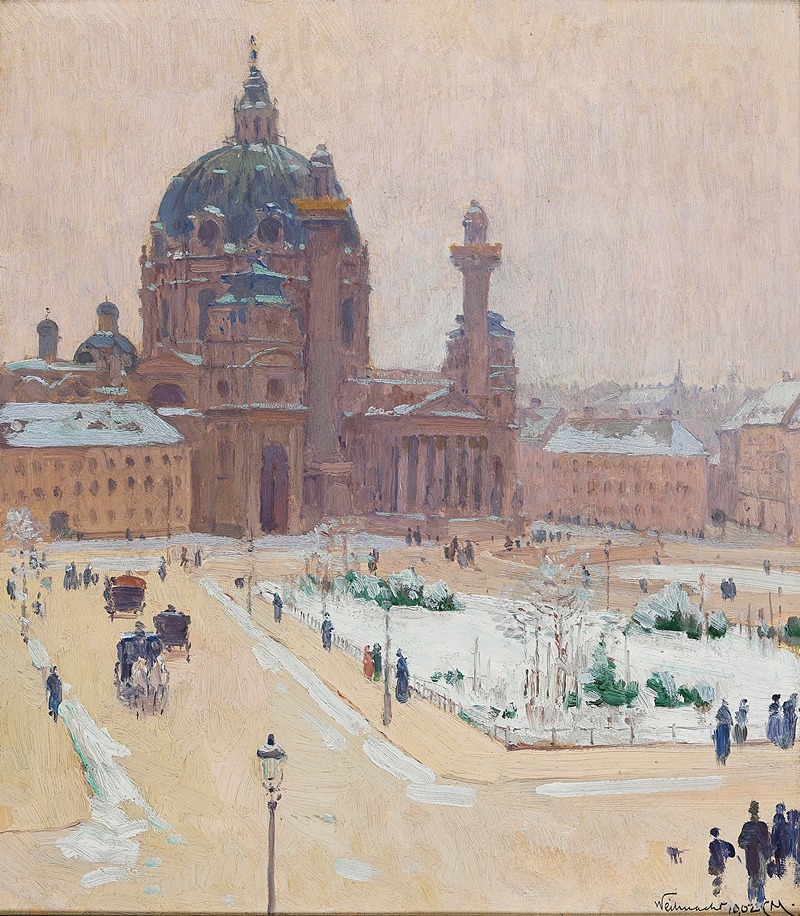
Karlskirche im Winter
A hand-painted replica of Carl Moll’s masterpiece Karlskirche im Winter, meticulously crafted by professional artists to capture the true essence of the original. Each piece is created with museum-quality canvas and rare mineral pigments, carefully painted by experienced artists with delicate brushstrokes and rich, layered colors to perfectly recreate the texture of the original artwork. Unlike machine-printed reproductions, this hand-painted version brings the painting to life, infused with the artist’s emotions and skill in every stroke. Whether for personal collection or home decoration, it instantly elevates the artistic atmosphere of any space.
Carl Moll was an Austrian painter known for his association with the Vienna Secession movement, which was a group of artists who broke away from the traditional art institutions in Vienna at the end of the 19th century. Moll's work is characterized by its attention to light and atmosphere, often depicting serene landscapes and urban scenes with a focus on mood and detail.
"Karlskirche im Winter" is one of Moll's notable works, capturing the iconic Karlskirche, or St. Charles's Church, in Vienna during the winter season. The church itself is a significant architectural landmark in Vienna, designed by the famous baroque architect Johann Bernhard Fischer von Erlach and completed in 1737. It was commissioned by Emperor Charles VI in gratitude for the city's deliverance from the plague, and it stands as a testament to the baroque style with its grand dome and distinctive twin columns.
In "Karlskirche im Winter," Moll presents the church enveloped in a wintery landscape, which adds a layer of tranquility and introspection to the scene. The painting is noted for its subtle use of color and light, capturing the muted tones of winter and the soft illumination that often accompanies snowy scenes. Moll's technique in this painting reflects his ability to convey atmosphere and emotion through careful attention to detail and composition.
The Vienna Secession, with which Moll was associated, was part of a broader movement across Europe that sought to challenge the established norms of art and architecture. The group included other notable artists such as Gustav Klimt and Josef Hoffmann, and they were instrumental in promoting modern art in Austria. Moll's work, including "Karlskirche im Winter," is often seen as embodying the ideals of the Secession, with its emphasis on innovation, individuality, and the integration of art into everyday life.
Moll's depiction of the Karlskirche in winter not only highlights his skill as a painter but also serves as a historical document of Vienna's cultural and architectural heritage. The painting captures a moment in time, preserving the beauty and serenity of the church amidst the quietude of winter. It reflects Moll's deep appreciation for his surroundings and his ability to translate that appreciation into his art.
Throughout his career, Carl Moll remained committed to exploring the interplay of light, color, and form, and "Karlskirche im Winter" is a testament to his mastery in these areas. The painting continues to be appreciated for its aesthetic qualities and its contribution to the legacy of the Vienna Secession movement. As with many of Moll's works, it invites viewers to pause and reflect on the beauty of the world around them, even in the stillness of winter.






